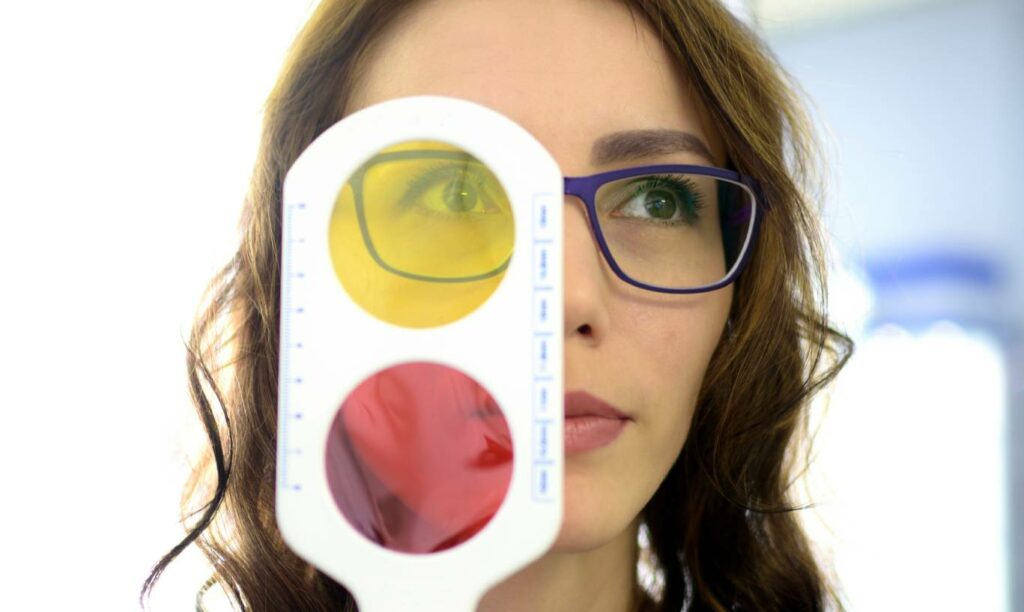
Living with color blindness
Imagine picking our produce at the grocery, watching a sunset, or choosing an outfit. These commonplace activities can present unique challenges for people who suffer from color blindness. You probably are so used to the way you see certain colors you may not even think about how it could be different for others. However, being color blind comes with many unexpected difficulties, surprises, and frustrations that you probably never even considered.
Color blindness, otherwise known as Color Vision Deficiency (CVD), is actually quite common, as 1 out of every 12 men is diagnosed with some form of color deficiency. Many people don’t even realize they have this condition and need to be tested.
If you or someone you know is color blind, there are some everyday experiences that may be more difficult. Small tasks, such as identifying the difference between ripe and unripe fruits and vegetables, choosing complementary colors for outfits, and even playing or watching certain sports, present a unique set of challenges for those who are color blind
Currently, there is no cure for this condition. Yet, we offer some treatments at VisionFirst to help with some of these difficulties.
Before sharing how we can help, we’d like to give you more info about color blindness and what symptoms to look for.
Color blindness in children
Color blindness can be especially challenging for children, as they may not even realize they are color blind, leading to some difficulties in the classroom. For parents and teachers, it is crucial to become more aware of the symptoms of color blindness, as it may be possible to recognize and respond to the particular challenges faced by children with color vision deficiency.
Some common indicators that a child may be experiencing color vision deficiency are:
- They are unable to tell the difference between certain colors or shades of similar colors
- They have trouble with specific assignments or projects that require them to use color
- They are sensitive to light in the classroom
- They feel self-conscious or frustrated about their color blindness
If you believe your child is exhibiting symptoms of color blindness, it is easy to get them tested by scheduling an appointment at VisionFirst. The sooner we identify color blindness, the easier it is to find ways to help them. If your child is diagnosed with color blindness, it is essential to communicate this information with their teachers, as well, as minor adjustments in the classroom can make a big difference.
What is color blindness?
Color blindness, or Color Vision Deficiency, is “an inability to see the difference between certain colors.”
Despite its name, color blindness doesn’t mean that you can’t see color—you just don’t see color in the usual way. Color blindness happens when the cone cells in your eyes, used to detect colors, are either absent or working improperly. Those with normal color vision have three types of cones—red, green, and blue. However, if you have color vision deficiency, one of these cones does not work correctly and detects a different color than normal. Severe color deficiency happens when all three cones are absent.
“Light, which contains all color wavelengths, enters your eye through the cornea and passes through the lens and transparent, jellylike tissue in your eye (vitreous humor) to wavelength-sensitive cells (cones) at the back of your eye in the macular area of the retina. The cones are sensitive to short (blue), medium (green) or long (red) wavelengths of light. Chemicals in the cones trigger a reaction and send the wavelength information through your optic nerve to your brain.
If your eyes are normal, you perceive color. But if your cones lack one or more wavelength-sensitive chemicals, you will be unable to distinguish the colors red, green or blue.”
Though there are different degrees of color blindness, the most common is the difficulty to distinguish between shades of red and green. Additionally, a small number of people can’t distinguish shades of blue and yellow. The most severe form of color blindness, where everything is seen in shades of gray, is uncommon.
Symptoms of color blindness could include difficulty seeing:
- Shades of red/green
- Shades of blue/yellow
- The difference between colors
- The brightness of colors
Even within these symptoms, there are varying degrees of color blindness that can affect your eyes. Sometimes, those with more mild cases of color vision deficiency may still see colors in good lighting conditions, while those with more severe cases cannot distinguish certain colors, regardless of lighting conditions. Monochromacy is when you don’t see colors at all, which is very rare.
What causes color blindness?
Typically, color blindness is genetic and inherited from one’s parents at birth. Statistically, more men are impacted by color blindness than women. Yet, many who are color blind may be unaware of having this eye deficiency.
Though color vision deficiency is typically something you have from birth, it can sometimes show up later in life. Below are some causes of color blindness that occurs later in life:
- Diseases such as sickle-cell anemia, diabetes, macular degeneration, and Alzheimer’s (just to name a few) can cause color blindness in one or both eyes
- Medications treating heart problems, infections, auto-immune diseases, or even nervous disorders
- Aging
- Exposure to chemicals such as carbon disulfide and fertilizers
- Trauma
Solutions for color blindness—one lens at a time
Missing out on shades of red, green, blue, or even yellow doesn’t have to be permanent. With a simple change in glasses, color blindness can become practically obsolete.
At Vision first, we offer a selection of frames from Chemistrie Color, a high-tech solution for color vision deficiency. Chemistrie Color has created a new lens technology that assists those with color blindness/deficiency by enabling them to discern additional colors and shades of colors, improving their color perception. They offer lens options to help with different types of color deficiency, providing varying degrees of assistance. They also offer both indoor and outdoor lenses, as well as custom glasses clips, ready-made Plano glasses, and uncut Plano lenses for use in any frame.
Our team at VisionFirst can help you find the perfect color deficiency lenses, empowering you or those you love to embrace the many beautiful colors in our world.
For questions about your eye health or eye care, contact us at VisionFirst. We’re happy to answer your questions and hear your concerns.
Does color blindness impact you?
Maybe you’re reading this and wondering if you or someone you care about is struggling with color blindness. The VisionFirst eye care expert team would be glad to talk about your eye concerns.
You can contact us to set up an appointment at any of our 15 locations in the Kentuckiana area.
